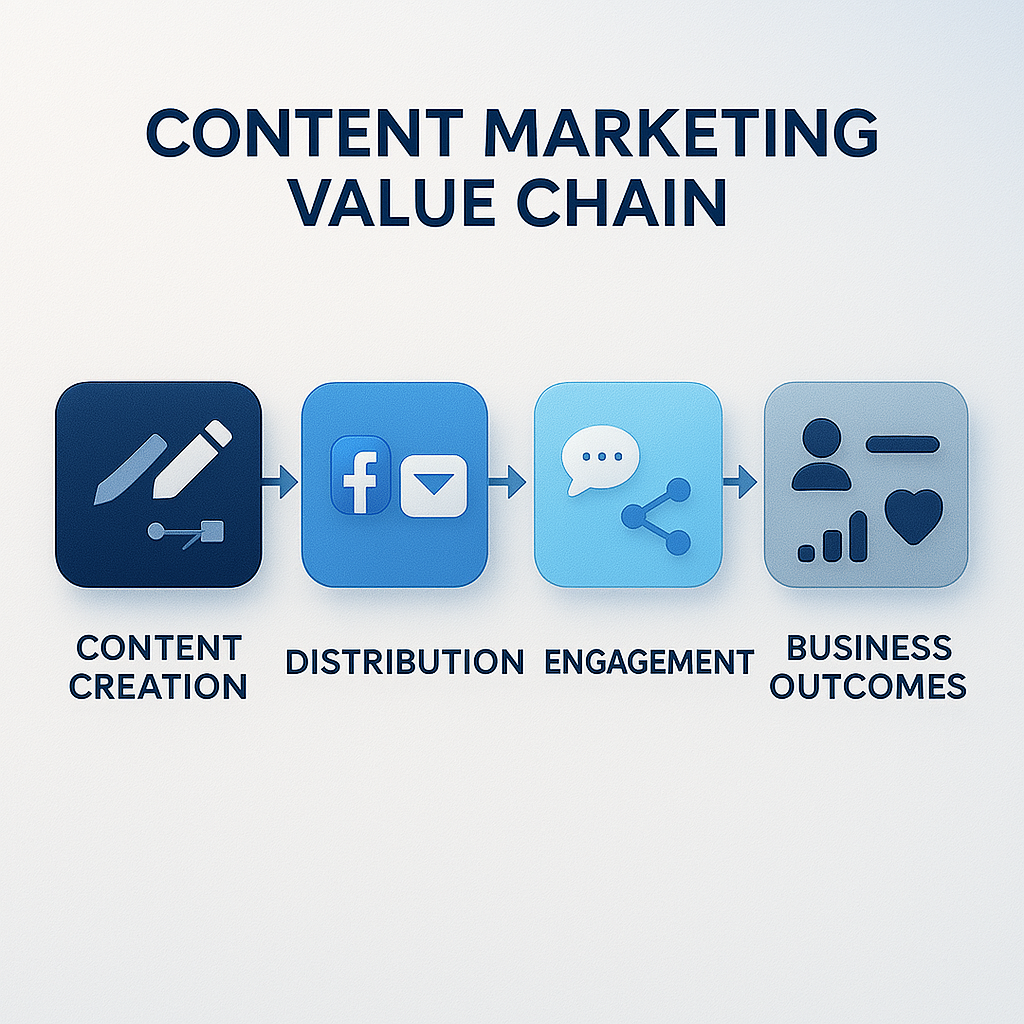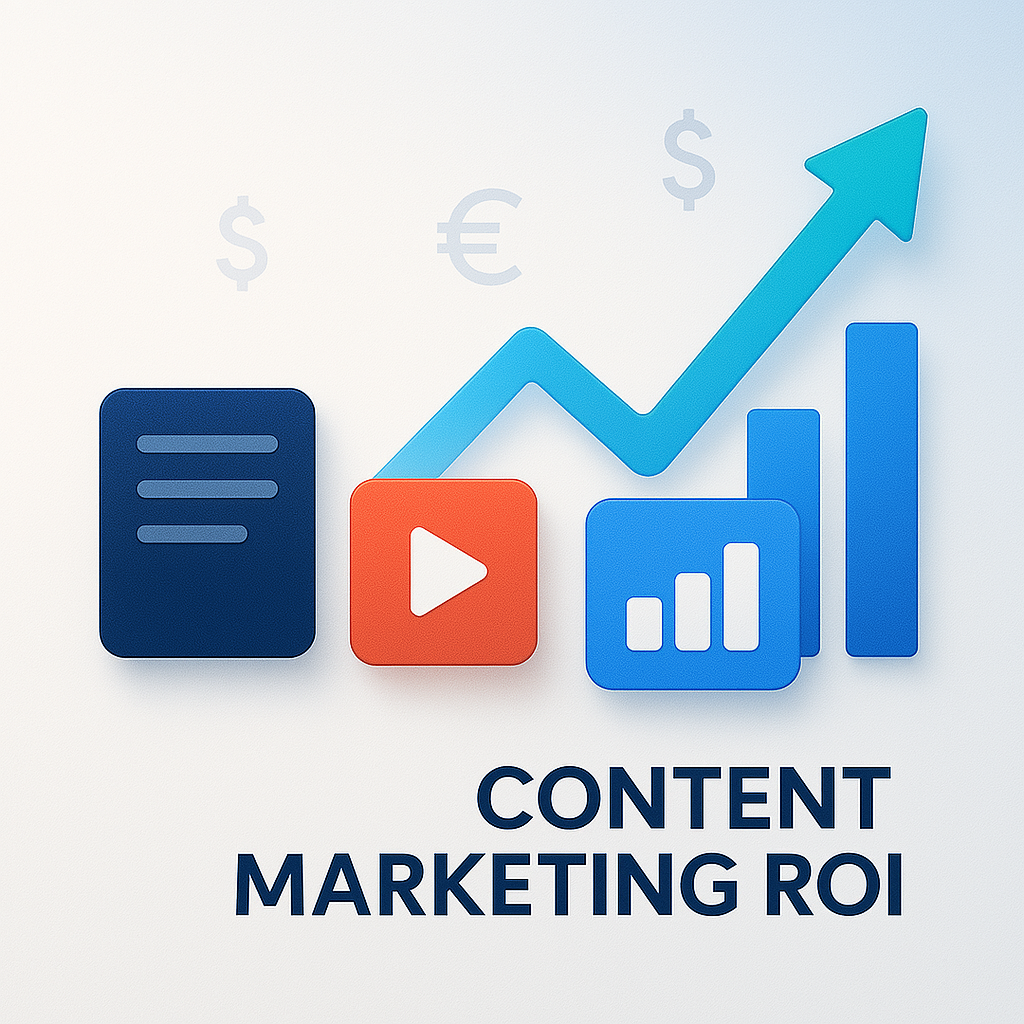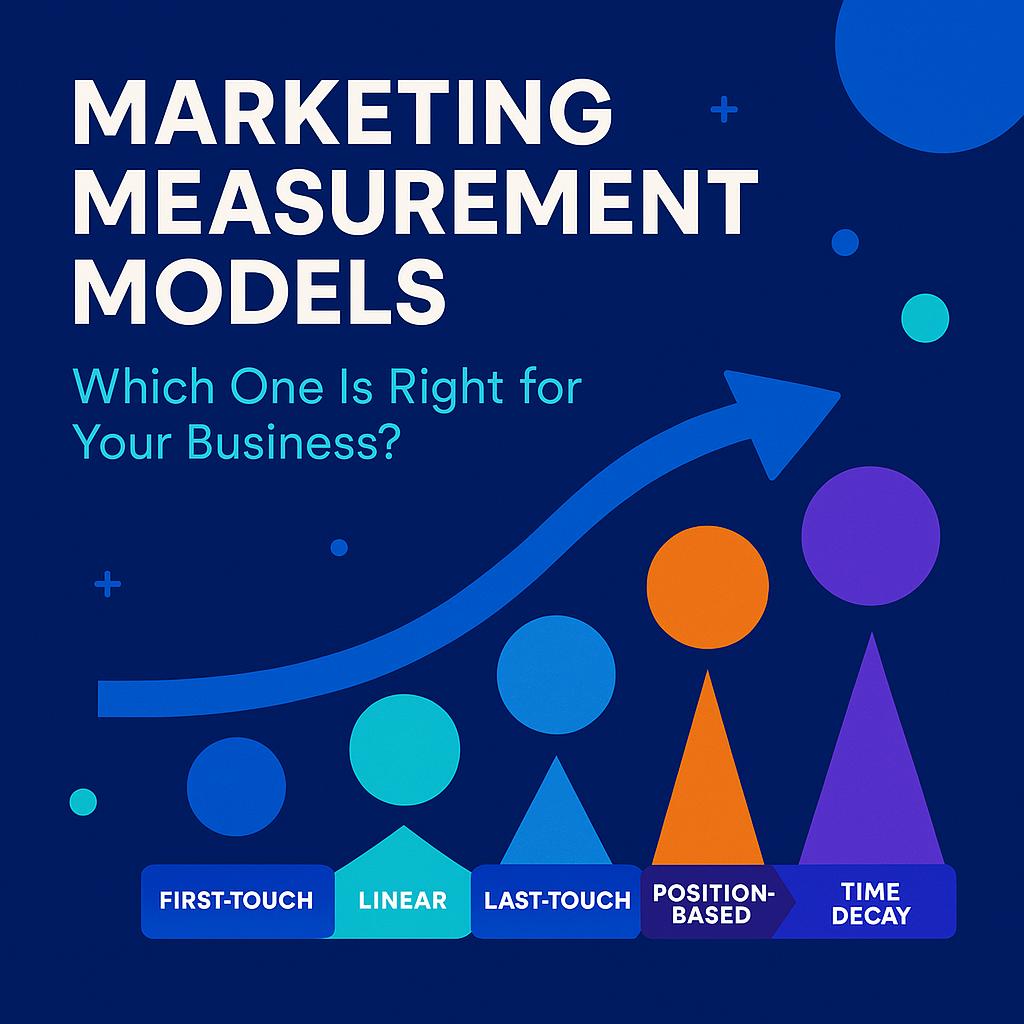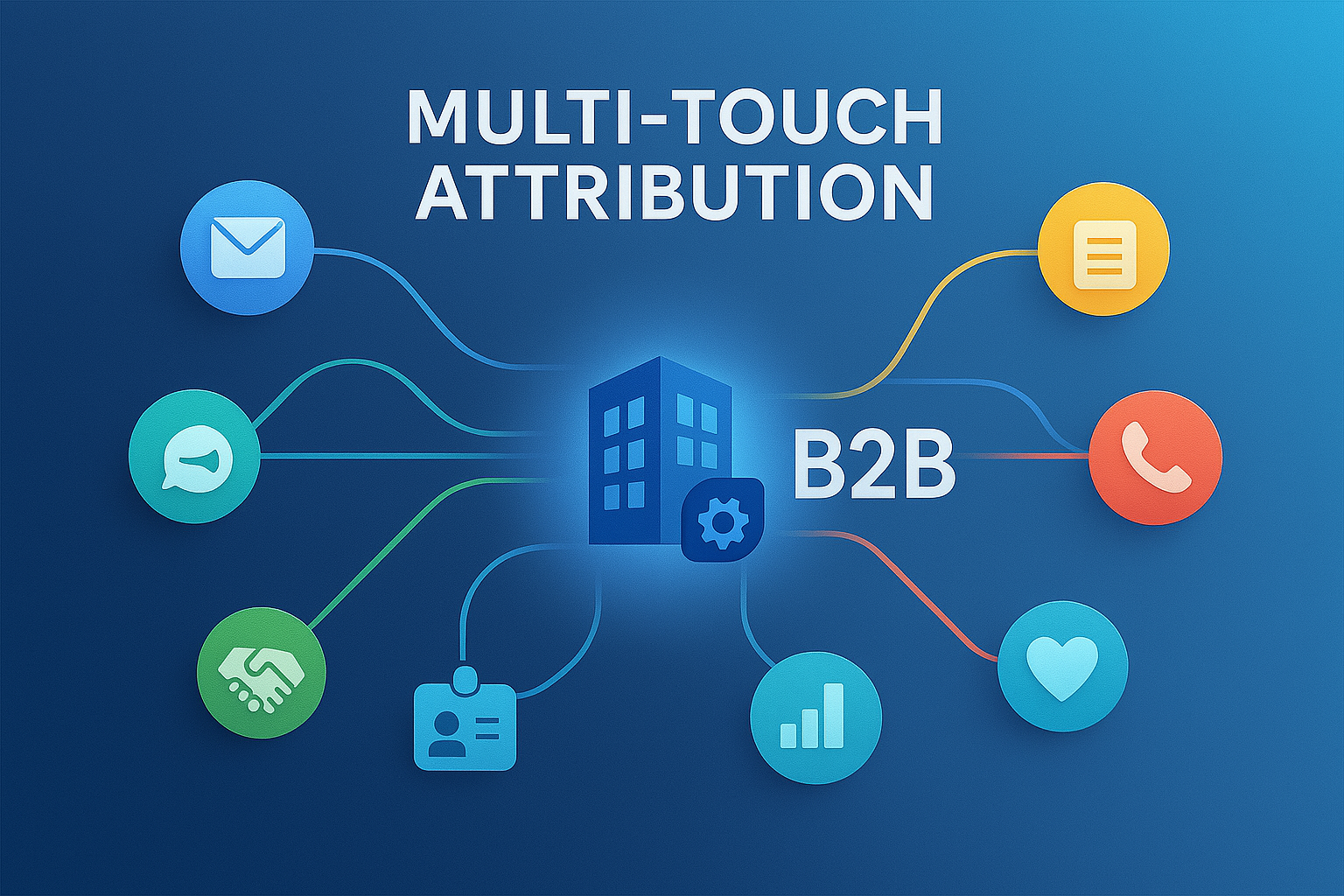Content marketing has evolved from a novel approach to a core B2B marketing strategy. Yet many marketing leaders still struggle to quantify its business impact. While creating valuable content intuitively makes sense, proving its direct contribution to revenue remains challenging. This framework provides a structured approach to measuring content marketing ROI that satisfies both creative teams and data-driven executives.
The Content ROI Challenge
Several factors make content marketing ROI particularly difficult to measure compared to other marketing investments:
Content marketing isn't a campaign—it's an asset-building strategy. The ROI framework must account for both short-term performance and long-term value creation.

A Multi-Dimensional ROI Framework
Rather than attempting to force content marketing into traditional direct-response measurement models, this framework evaluates performance across three dimensions:
1. Engagement Metrics
Engagement metrics track how audiences interact with your content. While not directly tied to revenue, they indicate content quality and relevance—the foundation for any successful content strategy.
2. Pipeline Influence Metrics
These metrics evaluate how content contributes to moving prospects through the funnel, connecting content consumption to specific pipeline outcomes.
3. Revenue & Efficiency Metrics
The bottom-line metrics that connect content directly to financial outcomes, measuring both revenue contribution and cost efficiency.
// Example ROI calculation for a single content asset
function calculateContentROI(content) {
const directMetrics = {
production_cost: content.creation_cost + content.promotion_cost,
directly_attributed_revenue: content.conversions * content.avg_deal_size * content.conversion_rate,
content_influenced_revenue: content.influenced_opps * content.avg_deal_size * content.influence_factor
};
// Calculate direct ROI
const directROI = (directMetrics.directly_attributed_revenue / directMetrics.production_cost) - 1;
// Calculate influence-adjusted ROI
const totalRevenue = directMetrics.directly_attributed_revenue + directMetrics.content_influenced_revenue;
const influenceROI = (totalRevenue / directMetrics.production_cost) - 1;
// Calculate asset lifetime value (for evergreen content)
const annualValue = totalRevenue * (1 - content.decay_rate);
const lifetimeValue = annualValue / content.decay_rate;
return {
direct_roi: directROI,
influence_roi: influenceROI,
lifetime_value: lifetimeValue,
payback_period: directMetrics.production_cost / (totalRevenue / 12) // in months
};
}Setting Up Your Content Measurement Infrastructure
To implement this framework, you'll need several systems working in concert to track content performance throughout the customer journey.
Content Tagging Strategy
Develop a comprehensive tagging taxonomy that categorizes content by type, topic, funnel stage, campaign, and target persona. Apply these tags consistently across your CMS, analytics platform, and marketing automation system.
Multi-Touch Attribution Setup
Implement a multi-touch attribution model that captures content interactions throughout the buyer journey. For B2B content marketing, position-based models (like U-shaped or W-shaped) typically provide a good balance between simplicity and accuracy.
CRM Integration
Connect content engagement data to your CRM to track how content consumption correlates with opportunity creation, pipeline progression, and closed deals. This connection is essential for measuring content's influence on revenue.
Establishing Content Investment Baselines
Accurate ROI calculation requires a clear understanding of your content investments. Track these cost components for each major content asset or campaign:
Content-Specific ROI Formulas
While the basic ROI formula is consistent (return divided by investment), different content types require tailored approaches to accurately calculate their business impact.
Thought Leadership Content
For top-of-funnel thought leadership content, incorporate brand perception metrics alongside direct performance indicators. Include metrics like share of voice, authority backlinks, and executive engagement in your ROI calculation.
Lead Generation Content
For gated assets designed to capture leads, track lead quality metrics alongside quantity. Calculate cost per marketing qualified lead (MQL) and apply conversion rates to project expected revenue contribution.
Sales Enablement Content
For content used by sales teams, measure impact on sales velocity, deal size, and win rates. Survey sales teams to determine which content assets most effectively address prospect objections and facilitate closing.
Customer Marketing Content
For content targeting existing customers, measure impact on retention rates, expansion revenue, and referrals. Calculate the lifetime value impact of customers who engage with your content versus those who don't.
The most valuable content marketing metrics align with your business objectives. A retention-focused business should prioritize different content ROI metrics than a company focused primarily on new customer acquisition.
Practical Measurement Examples
Let's examine how this framework applies to specific content marketing investments:
Example 1: Industry Report ROI
Consider a comprehensive industry report with a $25,000 production cost. The direct ROI calculation might include:
Taking both direct revenue and influenced revenue into account, this report generated a 22.8x ROI in its first year, with continuing value as an evergreen asset.
Example 2: Blog Content Program ROI
For ongoing blog content, consider the cumulative impact of consistent publishing:
While individual blog posts may show varied ROI, the program as a whole delivers an annual ROI of 4.2x, with compounding benefits as your content library grows.
Moving Beyond Last-Click Attribution
To accurately measure content marketing ROI, you must move beyond last-click attribution models, which systematically undervalue content's contribution to conversions.
Content Influence Modeling
Develop a content influence model that recognizes both direct attribution and influential touchpoints. Assign appropriate value to content that appears frequently in successful customer journeys, even if it's not the final conversion point.
Content Decay Analysis
Unlike campaign-based marketing, quality content often delivers value for extended periods. Track content performance over time to calculate its true lifetime value, accounting for both initial performance and long-tail impact.
Qualitative Value Assessment
Complement quantitative metrics with qualitative input from sales teams, customer interviews, and prospect feedback. This contextual understanding helps interpret the numerical data and identify content impact that analytics might miss.
Common Pitfalls in Content ROI Calculation
Avoid these common errors when calculating your content marketing ROI:
Siloed Measurement
Measuring content performance in isolation from other marketing activities creates a fragmented view. Integrate content analytics with your broader marketing measurement framework for accurate attribution.
Ignoring Content Repurposing
Many organizations fail to account for the full value of content assets that are repurposed across multiple channels. Track the performance of derived assets when calculating ROI for cornerstone content.
Overlooking Time Horizons
Content assets often deliver value over much longer timeframes than traditional campaigns. Establish appropriate measurement windows based on your sales cycle and content type.
Using Content ROI to Inform Strategy
The ultimate purpose of measuring content ROI isn't just reporting—it's optimizing your strategy for better business outcomes. Use your ROI insights to make these strategic decisions:
Evolving Your Measurement Approach
As your content program matures, your measurement approach should evolve alongside it. Early-stage programs might focus on engagement metrics, while more advanced programs should emphasize pipeline and revenue impact.
Conclusion: Making Content ROI Actionable
Content marketing ROI isn't just a metric for justifying budgets—it's a strategic tool for continuously improving your content program. By implementing a multi-dimensional framework that captures both direct and indirect value, you can make more informed decisions about where to invest your content resources.
Remember that content marketing is both an art and a science. While rigorous measurement is essential, don't let ROI calculations stifle creativity or discourage long-term thinking. The most successful content marketers balance data-driven decision-making with the creative exploration necessary to stand out in crowded marketplaces.
By applying this framework consistently and evolving it as your content program matures, you'll develop a clearer picture of how content contributes to your business objectives—and build stronger internal support for your content investments.



